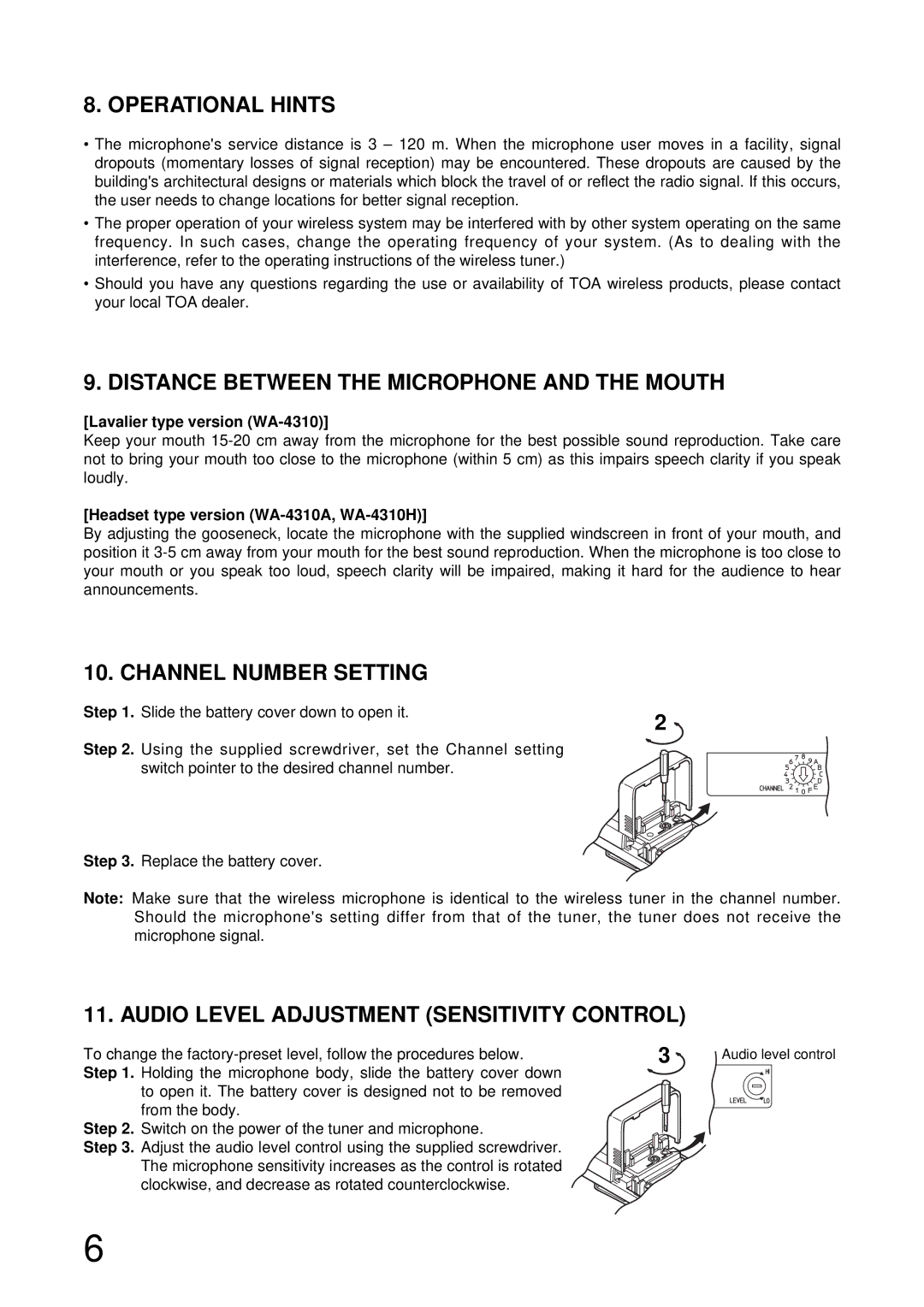
8. OPERATIONAL HINTS
•The microphone's service distance is 3 – 120 m. When the microphone user moves in a facility, signal dropouts (momentary losses of signal reception) may be encountered. These dropouts are caused by the building's architectural designs or materials which block the travel of or reflect the radio signal. If this occurs, the user needs to change locations for better signal reception.
•The proper operation of your wireless system may be interfered with by other system operating on the same frequency. In such cases, change the operating frequency of your system. (As to dealing with the interference, refer to the operating instructions of the wireless tuner.)
•Should you have any questions regarding the use or availability of TOA wireless products, please contact your local TOA dealer.
9. DISTANCE BETWEEN THE MICROPHONE AND THE MOUTH
[Lavalier type version (WA-4310)]
Keep your mouth
[Headset type version (WA-4310A, WA-4310H)]
By adjusting the gooseneck, locate the microphone with the supplied windscreen in front of your mouth, and position it
10. CHANNEL NUMBER SETTING
Step 1. Slide the battery cover down to open it.
2
Step 2. Using the supplied screwdriver, set the Channel setting switch pointer to the desired channel number.
Step 3. Replace the battery cover.
Note: Make sure that the wireless microphone is identical to the wireless tuner in the channel number. Should the microphone's setting differ from that of the tuner, the tuner does not receive the microphone signal.
11. AUDIO LEVEL ADJUSTMENT (SENSITIVITY CONTROL)
To change the | 3 | Audio level control | |
Step 1. | Holding the microphone body, slide the battery cover down |
|
|
| to open it. The battery cover is designed not to be removed |
|
|
| from the body. |
|
|
Step 2. | Switch on the power of the tuner and microphone. |
|
|
Step 3. | Adjust the audio level control using the supplied screwdriver. |
|
|
| The microphone sensitivity increases as the control is rotated |
|
|
| clockwise, and decrease as rotated counterclockwise. |
|
|
6
